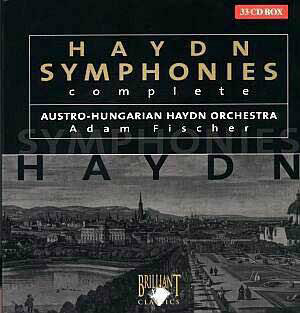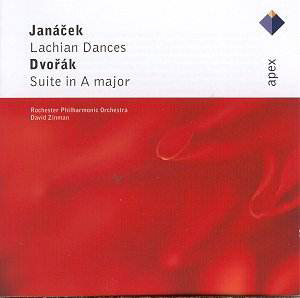 Composer: Joseph Haydn
Composer: Joseph Haydn
Works: The Complete Symphonies
Performers: Austro-Hungarian Haydn Orchestra, cond. Adam Fischer; Rainer Küchl (violin), Wolfgang Herzer (cello), Gerhard Turetschek (oboe), Michael Werba (bassoon)
Recording: Haydnsaal, Esterházy Palace, Eisenstadt, Austria
Label: Brilliant Classics
Joseph Haydn, often dubbed the “father of the symphony,” penned a monumental collection of 104 symphonies that chart the evolution of the genre itself. This complete recording by the Austro-Hungarian Haydn Orchestra under the baton of Adam Fischer offers a comprehensive survey of Haydn’s output from his early works in the 1750s through to his late masterpieces in the 1790s. Over the course of fourteen years, Fischer and his orchestra painstakingly captured the essence of Haydn’s symphonic language, which is marked by wit, innovation, and an ever-deepening emotional palette.
Fischer’s interpretive choices reflect a deep understanding of Haydn’s stylistic nuances. The orchestra’s sound is robust yet transparent, allowing the intricacies of Haydn’s orchestration to shine through. The string sections exhibit a warmth and clarity, particularly in symphonies like No. 25 and No. 41, where the textures can easily become dense. The vividness of the woodwinds, especially the contributions of the Vienna Philharmonic’s Michael Werba on bassoon and Gerhard Turetschek on oboe, provide a rich counterpoint to the strings, enhancing the emotional impact of pieces such as the “Surprise” Symphony No. 94. The recording venue, the Haydnsaal, is an ideal setting, with its resonant acoustics amplifying the orchestra’s natural sound while avoiding muddiness, although at times, the lushness of the hall renders some of the dynamic contrasts less pronounced, particularly in the early works where Haydn’s careful dynamic markings deserve more attention.
The performances across the set are consistently high in quality, though there are occasional interpretive inconsistencies. The orchestra’s approach is traditionally inclined, eschewing period-instrument practices in favor of a fuller, richer sound. While this could be seen as a limitation, it effectively underscores Haydn’s stylistic evolution, particularly in the later symphonies where he explores more complex harmonic and structural territory. Fischer’s tempos are judicious, though moments of excessive rubato occasionally disrupt the forward momentum, as noted in the brisk allegro of Symphony No. 15. Yet, this is a minor quibble in the grand tapestry of the set. The crescendos in Symphony No. 45 (“Farewell”) are masterfully executed, evoking the bittersweet emotions that characterize Haydn’s later style.
Comparing this set to other notable recordings, such as Antal Dorati’s acclaimed cycle, reveals both strengths and weaknesses. While Dorati’s interpretations are often more effervescent, Fischer’s cohesiveness across the entire set provides a unique perspective, allowing listeners to appreciate the underlying narrative of Haydn’s development as a composer. Notably, performances of the late symphonies, such as No. 101 (“Clock”) and No. 104 (“London”), encapsulate the culmination of Haydn’s ingenuity, revealing layers of wit and sophistication that resonate deeply within the listener.
This monumental project not only brings forth the vast symphonic landscape Haydn created but also serves as a significant educational tool for audiences who may overlook the composer’s contributions in favor of more frequently performed repertoire. The inclusion of the Sinfonia Concertante, performed with vitality, adds further value to the set, showcasing Haydn’s flair for blending instrumental colors. The entire collection stands as a testament to Haydn’s enduring legacy, filled with surprises, emotional depth, and a playful spirit that invites repeated listening.
This comprehensive set is a remarkable achievement, capturing the essence of an essential composer whose works remain a cornerstone of the orchestral canon. Its consistently high standard, along with the thoughtful approach of Fischer and the orchestra, makes this collection an invaluable addition to any serious music lover’s library, offering fresh insights into Haydn’s genius with every listen.


